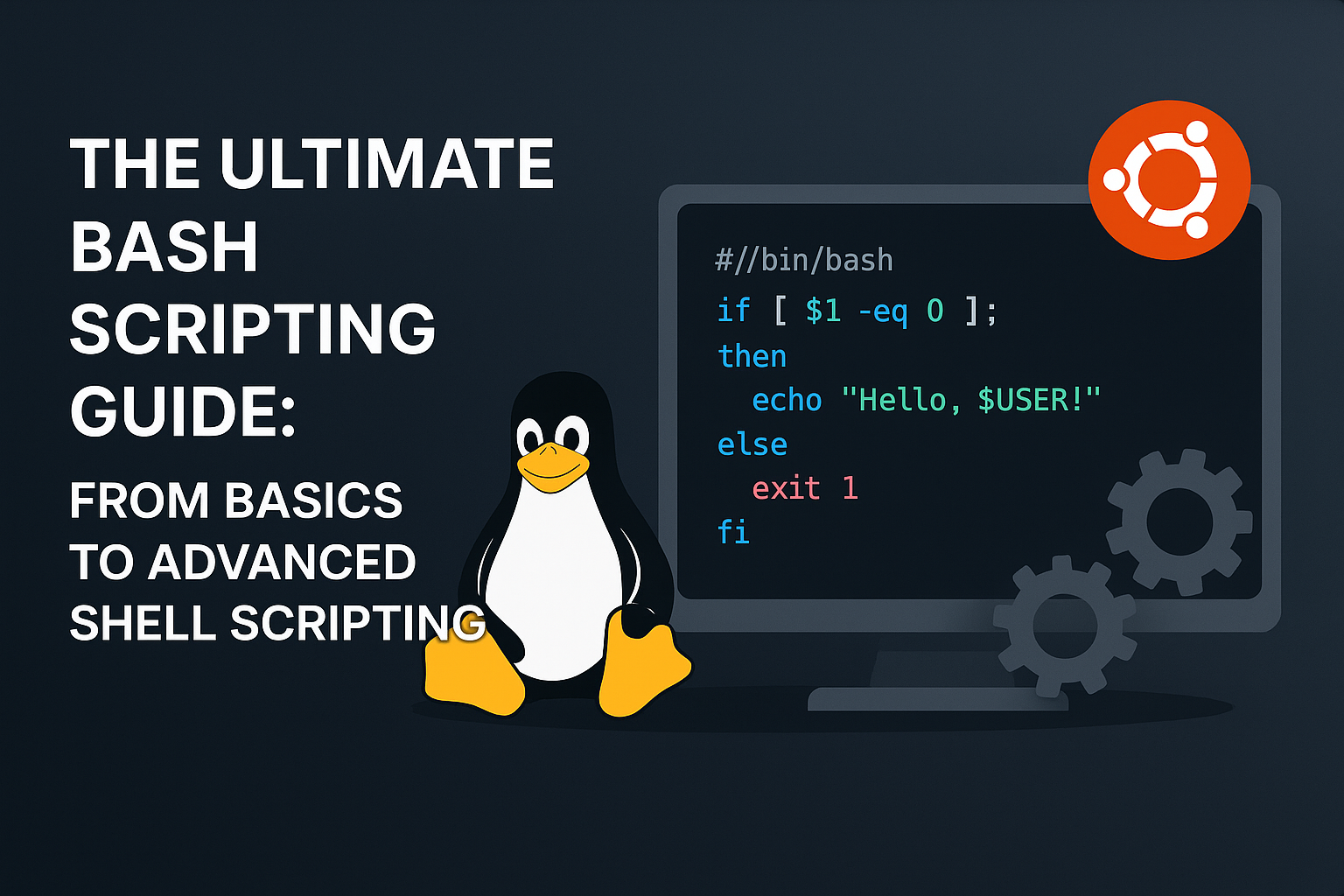Docker is a containerization platform that allows developers to package applications and their dependencies into containers, which can run consistently across different environments. Here's a roadmap for learning Docker, starting from the basics and progressing to more advanced topics:
1. Introduction to Docker
What is Docker?
Docker is a platform used for developing, shipping, and running applications inside containers. Containers package an application and all its dependencies, so it works consistently regardless of the environment.
Why Docker?
Portability: Containers can run on any machine, ensuring that the app will run the same across different environments (development, staging, production).
Efficiency: Containers share the host OS kernel and are lightweight compared to virtual machines.
Core Concepts
- Containers: Encapsulated environments that run applications and services.
- Images: Read-only templates used to create containers.
- Dockerfile: A script that contains instructions on how to build a Docker image.
- Docker Hub: A cloud-based registry where you can store and share Docker images.
- Docker Daemon: The background process that manages Docker containers.
- Docker CLI: Command-line interface used to interact with Docker.
2. Setting Up Docker
Installation:
- Install Docker on your machine (Windows, macOS, or Linux).
- Install Docker on Windows/Mac/Linux.
Once installed, familiarize yourself with basic commands like:
docker --version: To check the installed version.docker info: To see system information about Docker.Running your First Container:
Run a simple "Hello World" Docker container:
docker run hello-worldThis will pull the
hello-worldimage from Docker Hub and run it in a container.
3. Basic Docker Commands
Working with Containers:
docker run: Create and start a container.docker ps: List running containers.docker ps -a: List all containers (including stopped ones).docker stop <container_id>: Stop a running container.docker rm <container_id>: Remove a container.
Working with Images:
docker pull <image_name>: Download an image from Docker Hub.docker build: Build an image from a Dockerfile.docker images: List all available images on your machine.docker rmi <image_id>: Remove an image.
Interacting with Containers:
docker exec -it <container_id> bash: Access the container's shell for debugging.docker logs <container_id>: View the logs of a container.
4. Dockerfile and Image Creation
Writing a Dockerfile:
A Dockerfile is a simple text file that contains instructions to create an image.
Basic syntax:
FROM <base_image>
RUN <commands>
COPY <src> <dest>
CMD ["executable", "param1", "param2"]Building an Image:
Create a Dockerfile in your project directory.
Example Dockerfile:
FROM python:3.8-slim
WORKDIR /app
COPY . /app
RUN pip install -r requirements.txt
CMD ["python", "app.py"]Build the Docker image:
docker build -t my-python-app .is used to build a Docker image from a Dockerfile in the current directory
| Part | Explanation |
|---|---|
docker | Invokes the Docker CLI (Command Line Interface). |
build | Tells Docker you want to build an image. |
-t my-python-app | -t stands for tag. It assigns a name (and optionally a version) to the image. In this case, the image will be named my-python-app. |
. | The dot (.) specifies the build context — usually the directory containing your Dockerfile and all necessary files. It tells Docker, “Look here for the Dockerfile and application code.” |
Tagging and Pushing to Docker Hub:
Tag your image before pushing:
docker tag my-python-app mydockerhubusername/my-python-app:1.0Push your image to Docker Hub:
docker push mydockerhubusername/my-python-app:1.05. Networking in Docker
Docker Networking Basics:
Docker provides several networking modes for containers:
- bridge (default): Containers on the same host can communicate via virtual bridge networks.
- host: Containers share the host’s network stack.
- none: No networking for the container.
Creating a Custom Network:
You can create custom networks for better control and isolation between containers.
docker network create my_networkLinking Containers:
Use Docker’s --link option or Docker networks to link containers.
docker run --name db-container --network my_network mysql
docker run --name app-container --network my_network my-python-app
6. Docker Compose
What is Docker Compose?
Docker Compose is a tool for defining and running multi-container Docker applications. You define your application's services (containers), networks, and volumes in a docker-compose.yml file.
Basic docker-compose.yml Example:
version: '3'
services:
web:
image: my-python-app
ports:
- "5000:5000"
db:
image: mysql
environment:
MYSQL_ROOT_PASSWORD: rootpasswordRunning Containers with Compose:
To start your application:
docker-compose upTo stop your application:
docker-compose down
7. Volumes and Data Persistence
What are Volumes?
Volumes are used for persistent storage outside of containers. Containers are ephemeral, meaning when they stop, their data is lost unless saved in volumes.
Working with Volumes:
Create a volume:
docker volume create my_volumeMount a volume in a container:
docker run -v my_volume:/data my-container
8. Docker Swarm and Orchestration
What is Docker Swarm?
Docker Swarm is Docker's native clustering and orchestration tool. It allows you to manage a cluster of Docker hosts and scale applications across multiple nodes.
Setting up Swarm:
Initialize the Swarm:
docker swarm initJoin other nodes to the swarm using the provided token.
Deploying Services in Swarm:
Deploy a service:
docker service create --name my_service -p 80:80 nginxScale services:
docker service scale my_service=3
9. Docker Security
Best Practices:
- Least Privilege: Run containers with the least privileges necessary.
- Avoid Root User: Avoid running containers as root unless absolutely necessary.
- Image Scanning: Use image scanning tools like Clair or Trivy to check for vulnerabilities in your Docker images.
- Use Trusted Base Images: Always use official or trusted base images to reduce risks.
Docker Content Trust (DCT):
- Docker Content Trust (DCT) ensures that images are signed and verified, preventing the use of tampered images.
10. Advanced Docker Topics
Multi-Stage Builds:
Multi-stage builds allow you to minimize the size of your Docker images by using multiple FROM statements in a single Dockerfile. Each stage can be used to perform specific tasks like building the app, testing it, and preparing the production image.
CI/CD Pipelines with Docker:
Learn how to integrate Docker with CI/CD tools like Jenkins, GitLab CI, or GitHub Actions to automate your build and deployment process.
Monitoring Docker Containers:
Use tools like Prometheus, Grafana, and cAdvisor to monitor your containers.
Docker and Kubernetes:
Once you're comfortable with Docker, you can expand your knowledge to Kubernetes, which is a powerful container orchestration tool used to deploy, manage, and scale containerized applications.
Resources for Further Learning
- Official documentation : https://docs.docker.com
- Books:
- "Docker Deep Dive" by Nigel Poulton
- "Docker Up & Running" by Karl Matthias and Sean P. Kane
Connect the docker database
You have 3 options to access the database:
1. Connect using psql from your host machine
If you have psql installed locally, run:
psql -h localhost -p 5454 -U postgres- Default user is usually
postgres - It will ask for a password (check your
docker-compose.ymlor environment variablePOSTGRES_PASSWORD)
2. Connect inside the container
docker exec -it db_container_name psql -U postgresIf you want to connect to a specific database (e.g., test):
docker exec -it db_container_name psql -U postgres -d test
3. Use a GUI client like pgAdmin or DBeaver
- Host:
localhost - Port:
5454 - Username:
postgres - Password: (same as set in env variable or docker-compose file)
- Database: (default is
postgres, but if need to be connect other database , mention database_name example:test)
Import the database in docker container
Step 1: Create the database in container (example you have database school)
Step 2: Copy the SQL file into the container (if it’s not already there)
From your host machine:
school database in your Postgres container, so you just need to restore/import test.sql into it.
docker cp test.sql db_container_name:/test.sqlStep 2: Run psql to import into school
docker exec -i db_container_name psql -U user_name -d school < test.sqlExplanation:
-U user_name? uses the user (your databases are owner user)-d school? target database< test.sql? reads your dump file
Step 3: Verify import
After import, check inside container:
docker exec -it db_container_name psql -U user_name -d school(database_name)Then list tables:
\dtYou should see the tables from your test.sql.
Note:
If your test.sql contains CREATE DATABASE test;, you’ll need to remove that line before restoring into school. Otherwise, it will try to create a new database instead of restoring into the existing one.
For odoo filestore
Background
- Odoo stores binary files (images, attachments, reports, etc.) not in the DB, but in the filestore directory.
- By default:
/var/lib/odoo/filestore/<dbname>/- When you restored only the database (
.sql), the filestore did not come with it.
You need to also restore the filestore of the original DB.
1. If you have access to the server
Locate the filestore folder:
/var/lib/odoo/.local/share/Odoo/filestore/<dbname>(sometimes /var/lib/odoo/filestore/<dbname> depending on setup)
2.Zip it
tar -czf test_filestore.tar.gz /var/lib/odoo/filestore/<dbname>3.Copy it to your new server/container:
docker cp test_filestore.tar.gz web_container_name:/var/lib/odoo/filestore/4.Extract inside container:
docker exec -it web_container_name bash
cd /var/lib/odoo/filestore
tar -xzf test_filestore.tar.gz
If you don’t have the filestore
- Odoo will throw errors whenever it tries to load missing files.
- Workarounds:
Delete broken attachments
DELETE FROM ir_attachment WHERE store_fname IS NOT NULL;(removes all attachments, logos, documents, etc.)
- Or selectively remove only missing files.
If you have filestore folder
you already have the filestore folder, you just need to place it in the right location where your Odoo container expects it.
Where Odoo looks for the filestore
Inside your running container (web_container_name), Odoo looks for:
/var/lib/odoo/filestore/<dbname>/
Steps to restore filestore into Docker
1.Copy filestore from your host to the container
Assuming your filestore/<db_name> folder is in your local machine:
docker cp /path/to/filestore/db_name web_container_name:/var/lib/odoo/filestore/This will create:
/var/lib/odoo/filestore/<db_name>2.Check inside the container
docker exec -it web_container_name ls /var/lib/odoo/filestore/<db_name>You should see folders like b8/, 4d/, etc. (hashed storage).
3.Restart Odoo Container
docker restart web_container_name
Example to Dockerized the Flask Application
Dockerfile
FROM python:3 # Base image
WORKDIR /app # make the app as working directory inside container
COPY . . # copy every things from our current directory to inside app directory in container
RUN pip install -r requirements.txt
EXPOSE 5000 # Expose container 5000 port
CMD ["python","app.py"] # This command will run when the container startdocker-compose.yml
# docker compose file is the configuration file that let you to define and run the multiple container
version: "3.9"
services: # define multiple services that are needed
web:
build: . # this tells docker-compse to build an image by using the Dockerfile of current directory
image: custom_image_name # custom image name
container_name: custom_container_name # custom container name
ports:
- 5000:5000 # maps ports: port 5000 of host machine is mappped in container (host port: container port)app.py
from flask import Flask
app=Flask(__name__)
@app.route('/')
def home():
return "Hello world"
if __name__=="__main__":
app.run(host='0.0.0.0',port=5000)
Now add requirements.txt file and hit the below commands to run build image and run the container
docker compose up
docker compose up -d


